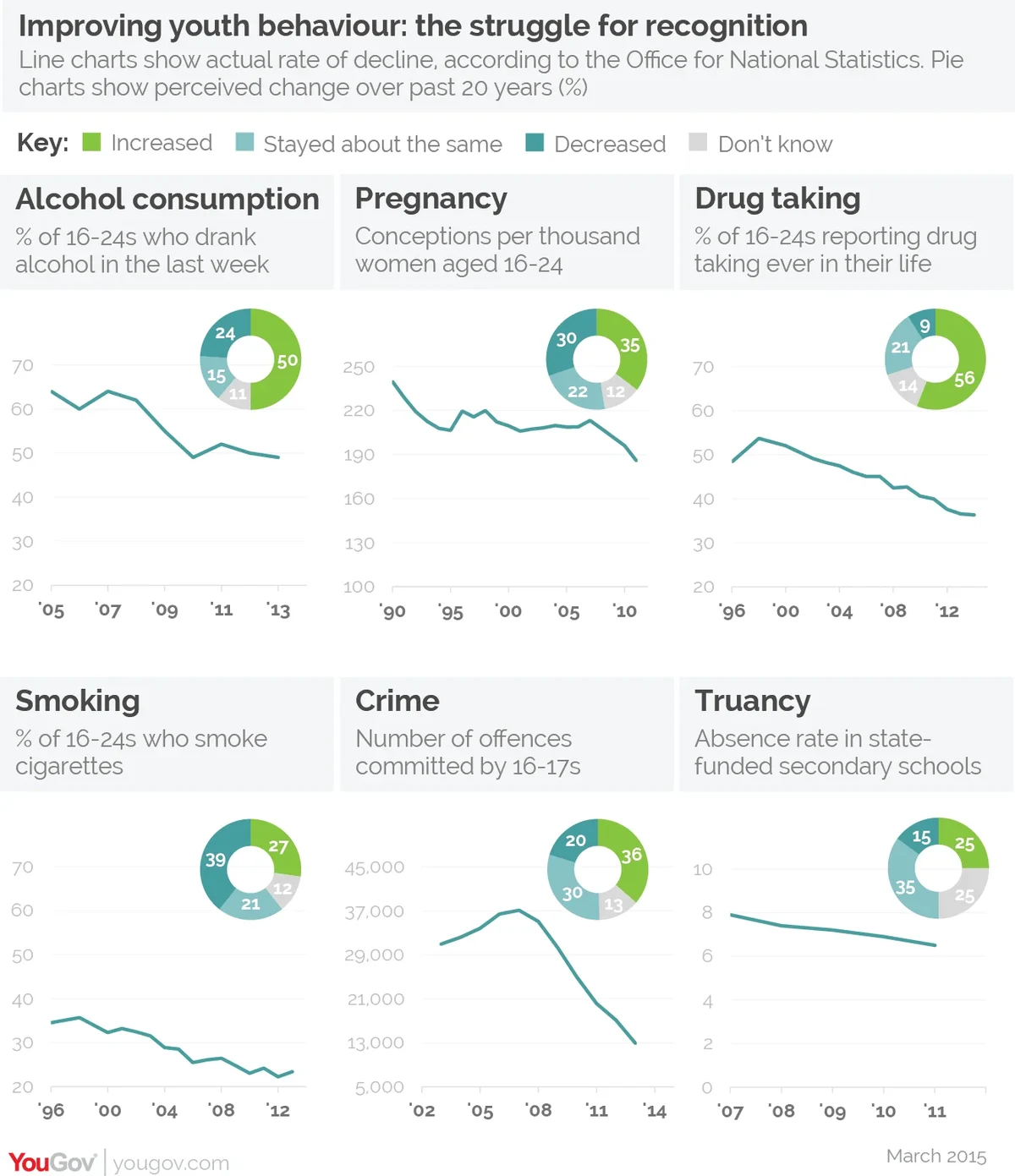Over the past 20 years rates of various concerning behaviours have improved dramatically for young people – but there is a striking disconnect between perception and reality
Gradually, over the past 10-20 years, reckless behaviour among young people has been declining. It could be too soon to say, and there are various important measures where there is no or not enough data to claim proof, but there is now a definite sense that the conception of rebellious youth popularised in the 1960s and ‘70s is fading away. Young people are turning their backs on getting drunk, youth crime rates are falling and teen pregnancy is tailing off.
Yet for such an significant shift in behaviour, it has gone remarkably unnoticed. New YouGov research reveals that most people in Britain seem to think young people are up to their usual tricks.
In five out of six behaviours where reliable government data shows a downward trend for young people, the majority of the British public say rates have worsened or not changed (the exception being smoking, where 48% say there has been no improvement, while 39% say there has been).
On alcohol consumption in 16-24s, which has seen a 15% reduction in the proportion drinking in the last week since 2005, 50% say rates have increased, and only 24% say they have decreased. On drug taking in 16-24s, which has seen a 12% reduction in the proportion having ever taken them since 1996, 56% say rates have increased, and only 9% say they have decreased.

On alcohol, pregnancy, smoking and truancy, 18-24 year-olds themselves are actually more likely than average to say that rates have worsened in the past 20 years.
Various explanations for this new, settled youth have been proposed, many focusing on the economic barriers to recklessness that have developed since the recession, such as difficulties with earning a steady income and having to live at home with parents. But at least some of the changes in youth behaviour appear to have begun prior to the recession. This, coupled with evidence of a changing political outlook among the younger generation, does seem to suggest that something more permanent, or culturally profound is going on.
Note: The time scales of the actual trends vary, while the public where asked on every measure to think about the past 20 years. And in two of the trends the subject groups are slightly different from the group people were asked to comment on (16-24 year-olds in every case). The government’s definition of youth crime cuts off at 18 years, so only offences by 16 and 17 year-olds resulting in a reprimand, warning or conviction are displayed. And truancy rates apply to children of school age, so only absences in state-funded secondary schools are displayed.









